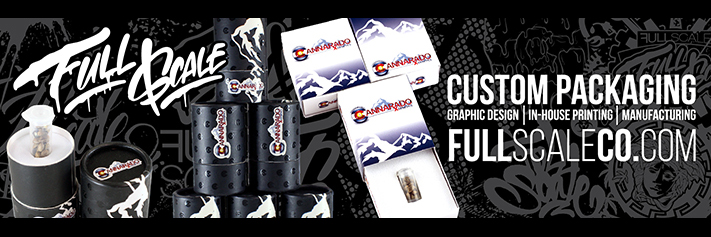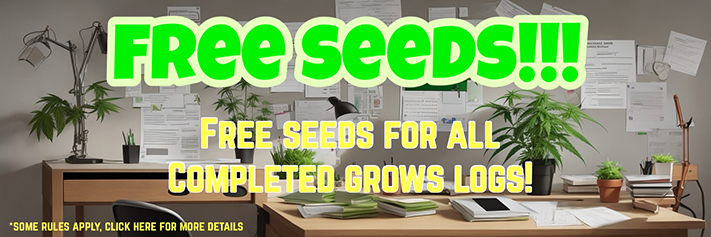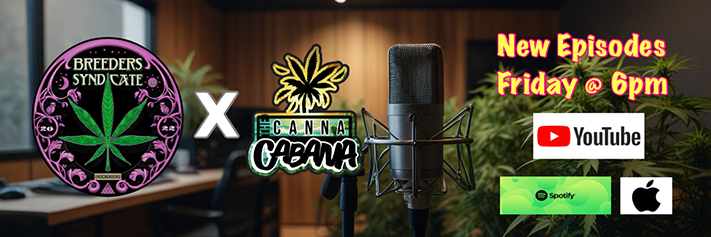To follow up, the following are the only two documents from MA legislature regarding the MA hemp and cannabis programs.
https://www.mass.gov/advisory/pesticide-use-on-marijuana-and-hemp
TH E CO M M O N W E A L T H OF MA S S A C H U S E T T SEX E C U T I V E OF F I C E OF EN E R G Y AN D EN V I R O N M E N T A L AF F A I R SDepartment of Agricultural Resources251 Causeway Street, Suite 500, Boston, MA 02114617-626-1700 fax: 617-626-1850
www.mass.gov/agrCHARLES D. BAKERGovernorKARYN E. POLITOLt. GovernorMATTHEW A. BEATONSecretaryJOHN LEBEAUXCommissionerPESTICIDE USE ON MARIJUANA AND HEMPTO: Cultivators of Marijuana and HempFROM: John Lebeaux, Commissioner
SUBJECT: Use of Pesticides on Marijuana and Hemp DATE:September26,2018(Updated)With the passage of Chapter 55 of the Acts of 2017(“Act”), it is now legal to cultivate marijuanafor recreational useandto cultivatehemp for commercial use in Massachusetts. The Department anticipates that pests and how to control pests will beof concern to cultivators relative to the health and value ofanycrop. Pesticides are used as one of the many tools to control pests. Under the Act and in accordance with M.G.L.c. 132B, the Massachusetts Pesticide Control Act, the Massachusetts Department of Agricultural Resources (“Department”) retains jurisdiction over pesticides within the Commonwealth.Currently,EPA does not allow the use of a registered pesticide on marijuana or hemp.The Department is not aware of any registered pesticide that has a label that would allow for use on marijuana or hemp undereither federal law or M.G.L. c. 132B. Because of this, the use of pesticides on marijuana or hempis prohibitedin Massachusetts.Examples of pesticides include,but are not limited to,the following:InsecticidesHerbicidesFungicidesPlant Growth RegulatorsPlease be aware that there are products that are marketed as “organic” or are on the Organic Material Review Institute (“OMRI”)list that are registered pesticides and cannot be used on marijuana or hemp. Any questions as to whether a product is apesticide should be directed to the Department.It should be noted that there are products that the EPA exemptsfrom registrationrequirements, as these productsor the ingredients within themare considered minimum risk by EPA.These products are commonly referred to as “25b products or Minimum Risk Pesticides”and to use these would not be considered a violation of M.G.L.c. 132B.Please refer to EPA’s website to find more information about these products and ingredientsthat
Page 2of 2may be exempt from registration requirements.1While the Departmenthas the authority to register products not registered by EPA, it does notcurrently do so. Any products that are exempt from EPA and Department registration are not subject to the same level of review, testing, and oversight as those that have been regulated. Whilethese exempt products may be analternative for pestcontrol, it is important to understand that the use of any product is done at the risk of the growerwithout the benefit of review and testing by the EPA to determine health and safety or otherimpacts. In the event a pesticide is used in violation of M.G.L. c. 132B or the regulations promulgated thereunder at 333 CMR 2.00 through 14.00, the Department may take enforcement action.1https://www.epa.gov/minimum-risk-pesticides
TH E CO M M O N W E A L T H OF MA S S A C H U S E T T SEX E C U T I V E OF F I C E OF EN E R G Y AN D EN V I R O N M E N T A L AF F A I R SDepartment of Agricultural Resources251 Causeway Street, Suite 500, Boston, MA 02114617-626-1700 fax: 617-626-1850
www.mass.gov/agrCHARLES D. BAKERGovernorKARYN E. POLITOLt. GovernorMATTHEW A. BEATONSecretaryJOHN LEBEAUXCommissionerPESTICIDE USE ON CANNABIS ADVISORYTO: Cultivator of Marijuana and HempFROM: John Lebeaux, Commissioner
SUBJECT: Use of Pesticides on Marijuana and HempDATE: October 16, 2018The Massachusetts Department of Agricultural Resources (“Department”) has determined that, with the exception of the use of what are commonly referred to as “25b Minimum Risk Products,” the use of pesticides on marijuana or hemp is prohibited in Massachusetts under both federal and state law. This Advisory will explain the Department’s determination and provide additional information about pesticides under applicable federal and state laws. IntroductionThe United States Environmental Protection Agency (“EPA”) regulates pesticides under the Federal Insecticide Fungicide Rodenticide Act, , 7 U.S.C. § 136 et seq. (“FIFRA”).1FIFRA provides the states with the authority to regulate pesticides more stringently at the state level, to the extent that such oversight is not inconsistent with federal law. EPA and the state agency designated as having oversight of pesticides on the state level, enter into a cooperative agreement. This agreement identifies both the federal and state jurisdiction as well as what responsibilities EPA designates to the state. The state designated authority is expected to uphold the federal requirement and notify or refer cases to EPA that contain possible FIFRA violations.The Department has been granted sole authority over pesticides within the Commonwealth under M.G.L. c 132B, the Massachusetts Pesticide Control Act,2and the regulations promulgated thereunder at 333 CMR 2.00 through 14.00 (“Regulations”)3and has been designated by EPA as the state authority under FIFRA. The Department’s authority includes registration of products, licensing of individuals, and the enforcement of M.G.L. c. 132B and the Regulations to ensure the health and safety of the public and environment.With the enactment of Chapter 55 of the Acts of 2017 (“Act”), it is now legal to cultivate marijuana for adult and medicinal use in Massachusetts. The Act also legalized the cultivation of hemp in Massachusetts. With this recent legalization, the Department must incorporate these new crops into its pesticide program. However, because marijuana and hemp1are both illegal on the federal level, the Department must make determinations on how it 1Marijuana and hemp are collectively referred to under the Controlled Substances Act, 21 U.S.C. § 801 et seq. (“CSA”), as “Marihuana.”"The term 'marihuana' means all parts of the plant Cannabis sativa L., whether growing or not; the seeds thereof; the resin extracted from any part of such plant; and every compound, manufacture, salt, derivative, mixture, or preparation of such plant, itsseeds or resin. Such term does not include the mature stalks of such plant, fiber produced from such stalks, oil or cake made from the seeds of such plant, any other compound, manufacture, salt, derivative, mixture, or
Page 2of 4will regulate pesticide use relative to marijuana and hemp. For the purposes of this Advisory, marijuana and hemp will becollectively referred to as “Cannabis,” which is the genus of flowering plant that includes both.Massachusetts ConsiderationsGenerally speaking, under both state and federal law a pesticide is defined as a substance or mixture of substances intended for preventing, destroying, repelling, or mitigating any pest, and any substance or mixture of substances intended for use as a plant regulator, defoliant, or desiccant.2The term pesticide includes herbicides, fungicides, insecticides, rodenticides and plant growth regulators. The Department reviewed FIFRA, M.G.L. c. 132B, and the Regulations to determine whether the use of pesticides could be allowed on Cannabis under either federal or state law. The Department needed to consider both registration andlabeling during its review, as well as the impacts of its decision on cultivators, consumers, and the environment.1.Registration and Labeling of Products Federal LawUnder FIFRA, all pesticides distributed or sold in the United States must be registeredby EPA, with limited exception. When a manufacturer of a product submits a request for registration, EPA conducts a thorough scientific, legal, and administrative review process, looking at everything from the ingredients of the pesticide, the particular site or crop where it is to be used, the amount, frequency, and timing of its use, and storage and disposal practices. Information is also submitted on things such as potential human health and environmental effects so that EPA can evaluate the harm to humans and the environment, including but not limited to, wildlife, fish, and plants, and any impacts. EPA also looks at potential human risks ranging from short-term toxicity to long-term health effects. To ensure the directions for use and safety measures are appropriate to any potential risk, EPA approves specific label directions that must be followed.3,4preparation of such mature stalks (except the resin extracted therefrom), fiber, oil, or cake, or the sterilized seed of such plant which is incapable of germination." 21 U.S.C. § 802(16).2Under Section 136(u) of FIFRA, a pesticide is defined as follows: The term "pesticide" means (1) any substance or mixture of substances intended for preventing, destroying, repelling, or mitigating any pest, (2) any substance or mixture of substancesintended for use as a plant regulator, defoliant, or desiccant, and (3) any nitrogen stabilizer, except that the term "pesticide" shall not include any article that is a "new animal drug" within the meaning of section 321(w)1of title 21, that has been determined by the Secretary of Health and Human Services not to be a new animal drug by a regulation establishing conditions of use for the article, or that is an animal feed within the meaning of section 321(x)1of title 21 bearing or containing a new animal drug. The term "pesticide" does not include liquid chemical sterilant products (including any sterilant or subordinate disinfectant claims on such products) for use on a critical or semi-critical device, as defined in section 321 of title 21. For purposes of the preceding sentence, the term "critical device" includes any device whichis introduced directly into the human body, either into or in contact with the bloodstream or normally sterile areas of the body and the term "semi-critical device" includes any device which contacts intact mucous membranes but which does not ordinarily penetrate the blood barrier or otherwise enter normally sterile areas of the body.Under M.G.L. c. 132B, Section 2, as pesticide is defined as follows: [A] substance or mixture of substances intended for preventing, destroying, repelling, or mitigating any pest, and any substance or mixture of substances intended for use as a plant regulator, defoliant, or desiccant; provided that the term ''Pesticide'' shall not include any article that is a ''new animal drug'' within the meaning of section 201 (w) of the Federal Food, Drug and Cosmetic Act (21 U.S.C. s 321 (w), or that has been determined by the Secretary of the United States Department of Health, Education and Welfare not to be a new animal drug by a regulation establishing conditions of use for the article, or that is an animal feed within the meaning of section 201 (x) of such act (21 U.S.C. s 321 (x)).3See,
https://www.epa.gov/pesticide-registration/about-pesticide-registration4EPA has published guidance on the registration and label process:
https://www.epa.gov/pesticide-registration/about-pesticide-registration; see also,
https://www.epa.gov/pesticide-registration/label-review-manual
Page 3of 4Any pesticide product that is registered by EPA must bear the EPA-approved label in accordance with 40 CFR Part 156. All pesticides, including those listed as organic, must be registered with EPA unless otherwise exempt under FIFRA. Registered products must follow the label requirements as specified by FIFRA. This concept is commonly referred to as “the label is the law” and as such, all pesticide labelsstate the following: “It is violation of federal law to use the product inconsistent with its label.” EPA’s goal is to ensure that labeling is adequate to protect the health and safety of anyone who uses or may be exposed to the product. This includes but is not limited to, use, directions, precautions (for the applicator and others), potential hazards (environmental and human), storage, and disposal. Because Cannabis is illegal in under federal law, EPA has not approved any registered label for its use.State Law Once a product is registered with EPA, it may also be subject to additional requirements by a state, which may have its own statutes, regulations, policies, and guidance with regards to pesticides while also ensuring implementation of FIFRA. In Massachusetts, products registered by EPA must also be registered by the Pesticide Board Subcommittee in accordance with M.G.L. c. 132B, Sections 3A and 7 before they can be used. There are no products registered in Massachusetts that have not already been registered by EPA. M.G.L. c. 132B, Section 6A establishes that “[n]o person shall use a registered pesticide in a manner that is inconsistent with its labeling or other restrictions imposed by the department.”Because Cannabis is illegal under federal law and not included on any registered product label or considered by EPA during registration review, the Department needed to determine whether use of a registered pesticide on Cannabis would still comply with M.G.L. c. 132B. The Department carefully reviewed the following factors in determining that allowing such use would be a violation of M.G.L. c. 132B, Section 6A:Broad Label Language:Labels can often be complicated and vague. While some states allow for broad label language, label language may be interpreted differently from state to state. When states have questions relative to broad label language they often refer to EPA to help clarify the language. Due to the fact that Cannabis is illegal, EPA would not be able to assist with these types of questions. Worker Protection Standard (“WPS”):The Department must take into consideration the use pattern of a product and WPS. For example, if a product is labeled for greenhouse applications and the applicator must follow ventilation criteria under WPS, an “indoor” growing facility may not have the capability of complying with these requirements. Food Tolerances:Food tolerances are established for each pesticide.5,6Since Cannabis is illegal, there has been no food tolerances set for this crop. As a result, the Department has no way of knowing how these products impact human health and safety. It is important to also note that while certain food tolerances may exist for certain methods of human consumption, other methods, such as inhalation, require additional review to determine safe tolerance levels.Exemptions from Food Tolerances:While exemptions from food tolerances exist, these food tolerances are based on existing crops. As Cannabis is a new crop and not yet federally legal, Cannabis has not been included in this evaluation. State Limited Use Requests to EPA:A state-limited use pesticideis a pesticide that is allowed to be used “off label” in a particular state for a particular use with approval from EPA. A state may make the request to EPA to allow this exception. In 2015, EPA encouraged states to submit what are known as “24(c)” 5https://www.epa.gov/pesticide-tolerances/about-pesticide-tolerances6https://www.epa.gov/pesticide-tolerances/setting-tolerances-pesticide-residues-foods#fed-register
Page 4of 4applications relative to marijuana use7and several states did so. In 2017, however, EPA responded to the states that Cannabis is federally illegal and therefore it could not approve these requests.8Changing Environment:While more states are legalizing Cannabis, the legal environment continues to change. The Department determined that its conservative approach allowed it to better handle changes on the federal level it would be easier to lift restrictions rather than impose new restrictions.2.25b Minimum Risk Products There are products that EPA exempts from registration requirements, as these products or ingredients within them are considered minimum risk by EPA under 40 CFR 152.25(f).9These products are commonly referred to as “25b” productsor pesticides. If a product’s active ingredient and inert ingredients are all on the list of exemptions, the product is not registered by EPA. Any product that is considered a 25b product and which is labeled as such will be allowed to be used in Massachusetts. Such use would not be considered a violation of M.G.L. c. 132B. It should be noted, however, that these products are not subject to the same level of review, testing and oversight as those that have been registered. While these exempt products may be an alternative for pest control, it is important to understand that the use of any product is done at the risk of the grower without the benefit of review and testing by EPA to determine health and safety or other impacts. 3.Products Not Marketed as PesticidesThe Department is aware of the fact that some of the active ingredients in 25b products are sold as other types of products for non-pesticidal uses. Use of a product for pest control that is not labeled for pest control is not allowed under M.G.L. c. 132B. For example, if a 25b product contained the active ingredient of Rosemary Oil and fell into the other criteria set by EPA, it could be used. If someone was to buy a bottle of rosemary oil not being sold for pest control, however, it could not be used for such purposes. It is important to note the differences. The 25b products are labeled for that pest control use and therefore there are instructions associated with how to use the product for such purposes. In addition, any safety concerns or issues may be listed on the label, whereas a product not labeled for pest control use may not have any of those items, therefore putting the applicator of the product, employees working with the crop and the public at risk.7https://aapco.files.wordpress.com/2017/06/epa-letter-to-cda-5-19-15-slns-for-marijuana.pdf8https://aapco.files.wordpress.com/2017/06/notice-cannabis-snl-registrations-california1.pdf9https://www.epa.gov/minimum-risk-pesticides

















